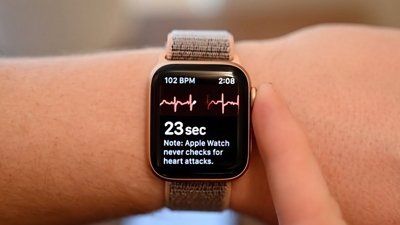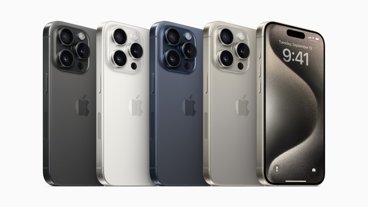Apple has two-year head start on Android in 3D sensing arms race, report says
Apple's savvy supply chain acumen has afforded it a two-year lead in a mounting 3D sensing arms race the company sparked with the introduction of Face ID on iPhone X, as reports claim major suppliers will not have crucial parts available for Android makers until 2019.
Citing talks with parts suppliers, Reuters estimates Android handset manufacturers like Huawei and Xiaomi will have to wait until 2019 for 3D sensing parts suppliers to reach production levels adequate for wide adoption.
That would give Apple, which debuted iPhone X last year, a substantial leg up over the competition.
Statements from Viavi Solutions Inc., Finisar Corp and Ams AG suggest production bottlenecks stand in the way of Android device makers fielding their own version of Apple's TrueDepth camera system and features like Face ID.
Viavi, which produces optical filters required for 3D sensing modules, is seeing constrained supply.
"It is going to take them a lot of time, the Android-based customers, to secure capacity throughout the whole supply chain," said Bill Ong, Viavi's senior director of investor relations. "We may have a potential introduction of a second handset maker into 3D sensing at the end of this calendar year. (But) the volumes would be very low. In 2019 you clearly will see at least two or more Android-based phones."
Ong declined to name the company, but said Viavi is in talks with "all" major smartphone manufacturers, the report said.
The largest roadblock standing in the way of a TrueDepth competitor is supply of vertical cavity surface emitting laser (VCSEL) modules. Sometimes referred to as structured light modules, VCSEL components make up the dot projector in Apple's 3D modeling apparatus, which also includes an infrared flood illuminator, and infrared camera and color cameras.
Apple secured a steady supply of VCSELs from partner manufacturer Finisar in a $390 million deal hammered out in December. Officially taken out of Apple's Advanced Manufacturing Fund, the infusion allowed Finisar to acquire a 700,000-square foot manufacturing plant in Sherman, Texas, which will pump out VCSEL supply for the iPhone maker.
In a statement last year, Apple said the investment will allow Finisar to "exponentially increase its R&D spending and high-volume production."
"Each customer has their own adoption timeline and rollout plan, which we can't discuss, but we expect the market opportunity for VCSEL technology to increase substantially in 2019," Craig Thompson, vice president of new markets at Finisar, told Reuters.
Other manufacturers build VCSEL modules, though production bottlenecks have hampered availability.
Lumentum, which was at one point pegged to deliver parts for iPhone X, is thought to have hit a snag last year that prompted Apple's Finisar deal. The firm in a recent earnings call said it is ramping up VCSEL and edge-emitting laser production for the first half of fiscal 2019, according to the report.
VCSEL producer Ams is also expecting capacity available for mass production in 2019.
However, by the time Android handset producers get their hands on suitable 3D sensing components, Apple will be well into its second year with the technology. Two years gives the Cupertino tech company a large window to build out TrueDepth, and perhaps other VCSEL-based camera hardware, with rumors already pointing to an expansion into iPad.
 Mikey Campbell
Mikey Campbell











 William Gallagher
William Gallagher
 Christine McKee
Christine McKee
 Michael Stroup
Michael Stroup
 William Gallagher and Mike Wuerthele
William Gallagher and Mike Wuerthele


 Chip Loder
Chip Loder
 Andrew Orr
Andrew Orr






